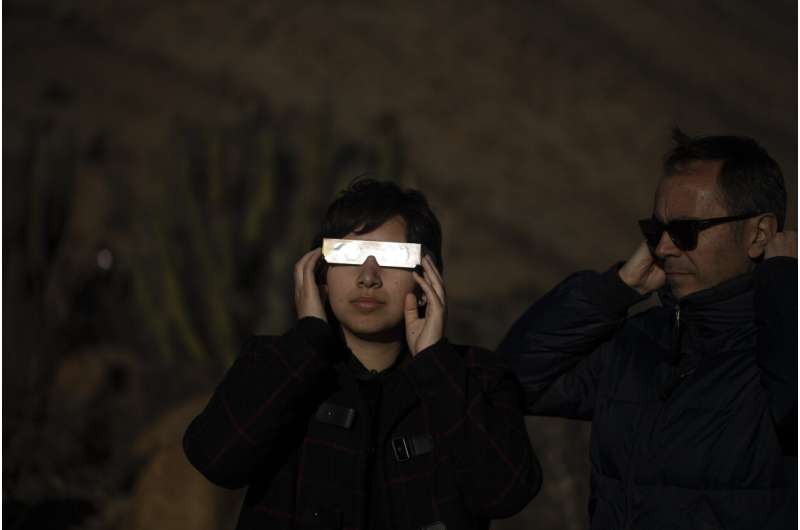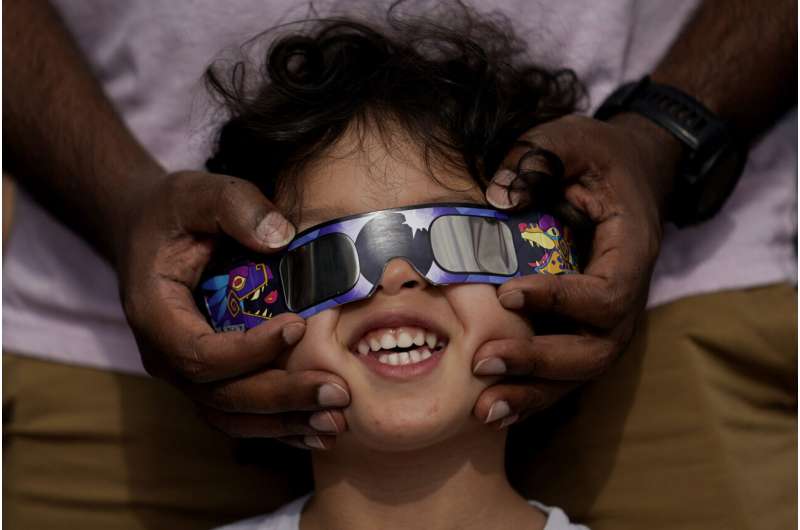Monday's total solar eclipse might become one of the most filmed and photographed events of the year.
As the moon passes in front of the sun, plunging a swath of North America into a few minutes of darkness, throngs will take pictures or videos of the moment. But powerful solar rays and drastic changes in lighting pose unique challenges in catching that perfect image.
Here are some pointers on how to get the best shot:
How can I find the best place to capture the eclipse?
First, get in the right position. You'll want to be as close as possible to the path of totality, which passes over Mexico's Pacific coast and ends in eastern Canada. Fifteen U.S. states get to see the full eclipse.
There are online maps to check if you'll be anywhere near the path. NASA's map shows how many minutes of totality there will be if you're inside the path depending on location, and how much of a partial eclipse you'll see if you're outside of it.
For spectators in Mexico and Canada, eclipse expert Xavier Jubier's website overlays the eclipse's path on Google Maps, which allows zooming into street level detail.
What can I use to plan a good shot?
With so many factors in play including cloud cover and the sun's position in the sky, planning is key to getting the best image.
There are a host of smartphone apps for eclipse chasers. The American Astronomical Society has compiled a list of useful ones for both iOS and Android devices, including its own Totality app that shows your location on a map of the totality path.
The Solar Eclipse Timer uses your phone's GPS to play an audio countdown to the moment of totality and highlights key moments. The app's maker advises using a separate phone for taking photos.
Eclipse Calculator 2 for Android devices uses the phone's camera to depict how the event will look in the sky from your position, using lines overlaid on top of the camera image. For iPhone users, apps like Sky Guide and SkySafari have eclipse simulators. There are other iOS apps that use augmented reality to simulate the eclipse, but they're pricier and not yet on the society's list.
How can I take a great photo of the eclipse?
Digital SLR cameras will produce the best photos. Their manual exposure controls and ability to add zoom lenses and accessories like remote shutter buttons will let you make great pictures.
Associated Press chief photographer Julio Cortez advises using a smaller aperture—f11 or f17—to keep the focus "a little bit sharper." When he shot the 2017 total solar eclipse, he used an ISO setting of 1250 and 1/500 shutter speed.

The rest of us have our smartphones.
NASA published detailed guidelines for smartphone eclipse photography in 2017 with the caveat that "smartphones were never designed to do sun and moon photography." That's because the wide-angle lenses on most devices won't let you capture close-up detail. But new phones released since then come with sophisticated sensors, multiple lenses and image stabilization software that give a better chance.
Some experts suggest HDR, or High Dynamic Range, mode, which takes a series of pictures at different light levels and then blends them into a single shot—ideal for combining an eclipse's very dark and very bright areas.
But don't use flash. You can spoil the moment by ruining the vision of those around you whose eyes have adapted to darkness.
What will I need to protect against the sun?
The American Astronomical Society advises using a solar filter to protect cameras against intense sunlight and heat.
You can buy a filter that screws onto DSLR lenses, but it will take time to remove when totality happens. Cortez made his own with cardboard, tinted film and fasteners that he can quickly rip off.
For smartphones, you can use a spare pair of eclipse glasses and hold it over the lens, or buy a smartphone filter. There's no international standard, but the society's website has a list of models it considers safe. Make sure macro mode is not on.
If you plan to shoot for an extended time, use a tripod. To line up his camera after mounting it on a tripod, Cortez uses a solar finder, which helps locate the sun without damaging your eyes or equipment.
Cortez also advises bringing a white towel to cover up your gear after setting up to keep it from overheating as you wait for the big moment.
Can I take a selfie with the eclipse?
It's very tempting to make a TikTok or Instagram-friendly eclipse video. Perhaps you want to selfie video, narrating into the camera while the cosmic ballet between sun and moon plays out over your shoulder.
Be careful: While you might think your vision isn't at risk because you're not looking at the sun, your phone's screen could reflect harmful ultraviolet light, eye experts have warned.
And if you're using a solar filter on the selfie camera, it will turn the picture dark and you won't show up.
© 2024 The Associated Press. All rights reserved. This material may not be published, broadcast, rewritten or redistributed without permission.



